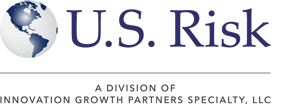Insights
 About Integrated Risk Management
About Integrated Risk Management
September 15, 2023
Businesses face an ever-evolving set of risks in their operations. From employee issues to the adoption of new technologies, volatile market conditions, and threats to infrastructure, risk management solutions must be able to adapt quickly and comprehensively.
In this article, we delve into a strategy known as Integrated Risk Management, providing details about its components and its advantages with the goal of helping business owners address current and emerging risks in a holistic manner.
What is Integrated Risk Management?
Integrated risk management (IRM) is an approach to risk management that incorporates multiple facets of risk across an organization into a unified framework, allowing for a more holistic and strategic understanding and management of risks. It differs from traditional, siloed risk management in that it aims to break down barriers between different risk disciplines and consider how they might interact and impact the overall risk profile of an organization.
The key aspects of IRM include:
- Holistic Approach: Instead of looking at risks in isolation, IRM seeks to consider the entire risk landscape of an organization. This includes operational risks, strategic risks, financial risks, etc.
- Collaboration: By integrating different risk management disciplines, departments and units can collaborate more effectively, sharing information and insights that may be relevant across multiple areas of risk.
- Technology Utilization: Many modern IRM approaches use advanced software and technologies to gather, analyze, and present risk data. This can help organizations identify interdependencies and potential cascading impacts from certain risk events.
- Strategic Alignment: IRM aligns risk management with the overall strategic objectives of the organization. This ensures that risk management efforts directly support and enable the achievement of business goals.
- Adaptability: Given the ever-changing nature of risks (especially in a world increasingly influenced by digital transformation, geopolitical shifts, and globalized business operations), IRM systems are designed to be adaptable. They can incorporate new data sources and respond to changing risk landscapes.
Another key component of IRM is that this approach is viewed as a proactive risk management solution, allowing businesses to anticipate and plan for potential risks before they can cause financial or reputational damage to the company. This proactive stance can lead to better decision-making and resource allocation.
What are the Benefits of Integrated Risk Management?
As a proactive and flexible approach to risk management, IRM offers significant benefits, including:
- Improved Decision Making: With a comprehensive view of risks and their potential interplay, organizations can make better-informed decisions.
- Resource Optimization: With a clear view of the entire risk landscape, organizations can prioritize and allocate resources more effectively.
- Enhanced Resilience: Understanding how different risks can cascade or interact allows organizations to develop strategies to become more resilient in the face of adverse events.
- Strategic Enablement: Instead of seeing risk management as a purely defensive measure, IRM can help organizations identify opportunities and strategically position themselves in the marketplace.
- Improved Stakeholder Confidence: Shareholders, customers, partners, and employees often have increased confidence in businesses that demonstrate a comprehensive approach to risk management. This can lead to increased investments, customer loyalty, and employee retention.
Adopting IRM into risk decision making processes enables businesses to turn risk management from a reactive, siloed activity into a strategic enabler. By understanding and managing risks in an integrated manner, businesses can seize opportunities, mitigate threats, and position themselves for long-term success.
Final Words on Integrated Risk Management
For too long, businesses have chosen to react defensively to risks after an incident occurs. In integrated risk management (IRM), threats are anticipated and planned for long before they can cause irreparable harm to the financial standing and reputation of a commercial operation.
Adopting IRM is not an overnight process, however; while IRM offers many advantages, implementing it requires a commitment from leadership, clear communication across departments, and often a shift in organizational culture to promote collaboration and integrated thinking. ◼

